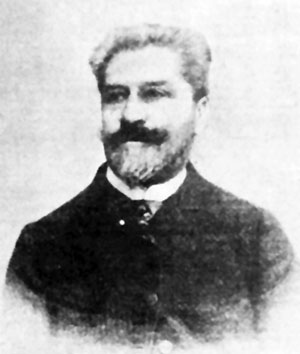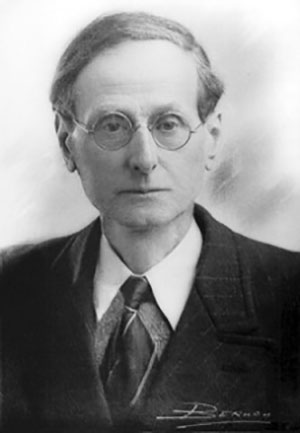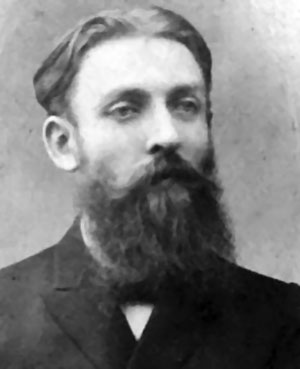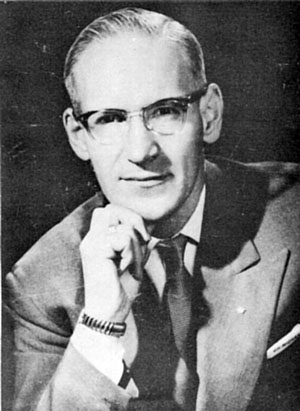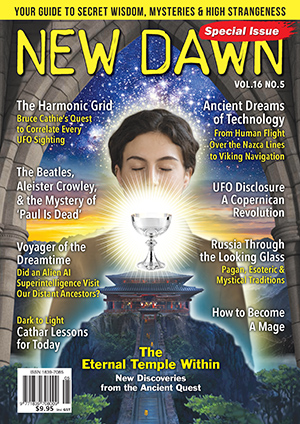From New Dawn Special Issue Vol 16 No 5 (Oct 2022)
France, the ancient land of Gaul, holds an unparalleled place in the history of the development and spread of mystical, esoteric, and occult teachings in the West.
Southern France is the region where the ‘Good Christians’ or Cathars (the name derived from the Greek word katharos, meaning ‘The Pure’) emerged in the twelfth and thirteenth centuries.
The Cathars received their central teachings from the Bogomils (meaning ‘beloved of God’), a Gnostic community active in the Balkans since at least the tenth century.
At the heart of Cathar doctrine is the notion that true Christianity (which the Cathars claimed to possess via a secret line of apostolic succession from St John) is a life lived, not simply a doctrine believed. For them, the life of Jesus was a model the ‘Good Christian’ must strive to emulate, not a vicarious sacrifice to be blindly accepted on trust.
The existence of the Cathars challenged the legitimacy of the Roman Church, as historian Zoe Oldenbourg explains in Massacre at Montségur:
The Cathars declared themselves the heirs of a tradition that was older than that held by the Church of Rome – and, by implication, both less contaminated and near in spirit to the Apostolic tradition. They claimed to be the only persons who had kept and cherished the Holy Spirit which Christ had bestowed upon His Church; and it looks as though this claim was at least partially justified….
After the manner of the Bogomils and the followers of the Eastern Gnostic Prophet Mani, the Cathars believed in a cosmic battle between the principles of Light and Darkness on whose meetings and encounters everything in the universe is based. Darkness was for them the unperfected, the transient. They identified all clerical and secular rulers as the personification of the Darkness.
“Today we are better informed than they were concerning the practices of the Early Church,” says Zoe Oldenbourg, “and have to admit that the Cathars merely followed a tradition somewhat more ancient than that of the [Roman] Church herself. It was with some appearance of reason that they claimed Rome as the party guilty of ‘heresy’ through her falling-out from the original purity which had characterised the Church of the Apostles.”
As it did with the Gnostic Christians, Rome saw the Cathars as a threat.
“Catharism was spreading with extraordinary speed in Southern France,” points out the French writer Maurice Magre. “It was the radiant cult of the pure spirit which took possession of men’s souls, and it seriously endangered the materialistic Church of the pope.”
The central tenets of the Cathars, particularly the prominence they ascribed to Mary Magdalene and St. John, confirm they were a manifestation of a hidden stream of secret teachings called by the Prophet Mani, the universal ‘Religion of Light’.
Forced underground by persecution and massacres, the Gnostics would later re-emerge at the appointed time.
The Gnostic Revival
Six hundred years after Rome launched the murderous Crusade against the ‘Good Christians’, a group of French mystics were inspired to play a unique role in the revival of the Gnostic tradition in the modern world.
Jules-Benoit Doinel (1842–1902) had frequented esoteric and mystical circles for some years. One of these, formed around the Countess of Caithness, took a particular interest in ancient Gnosticism. Dr Stephan A. Hoeller, author of Gnosticism: New Light on the Tradition of Inner Knowing, informs us:
It was into this milieu that the ancient Gnostic tradition was reborn in France in the late nineteenth century. Jules-Benoit Doinel du Val Michel, a scholarly esotericist who had been a devoted researcher of the documents of the Cathar faith, had a mystical experience in 1890, in which he received spiritual empowerment to reconstitute the Gnostic church of old. His experience occurred in the splendid chapel at the residence of the Duchess de Pomar, Countess of Caithness, in Paris. This remarkable noblewoman was a friend of Madame Blavatsky and an early Theosophist and patroness of esoteric movements….
Doinel recorded an account of his ‘mystical experience’ and ‘spiritual empowerment’, which was later preserved by Déodat Roché (1877–1978), the foremost historian of Catharism.
One evening, in the autumn of 1890, at the Paris circle of Lady Caithness, Doinel received the communication, “Prepare yourselves. Soon the Bishops of the Albigensian Synod of Montségur are going to appear.” Doinel could not remember the exact words but the sense he recalled from the magical communication of Guilhabert de Castres, the famed Cathar bishop:
We came to you from the most distant of the two Empyrean circles. We bless you. That the principle of good, God, be eternally praised and blessed, glorified, and adored. Amen.
We came to you dear ones… you will establish the Assembly of the Paraclete and you will call it the Gnostic Church.
Doinel and the circle of mystic seekers were seized by “an understandable emotion,” tears streamed from their eyes. Doinel felt fire in his veins, akin to the fire the apostles felt on their heads at Pentecost. A voice was heard: “That the Holy Pleroma bless you. That the Aeons bless you. We bless you as we bless the martyrs of the Pyrenaean Tabor. Amen. Amen. Amen.”
Jules Doinel, as instructed, established the Église Gnostique (Gnostic Church), which was organised along sacramental lines. The teachings of the new church were strictly Gnostic, women were ordained to priestly and episcopal offices, and Doinel also established once again the sacrament of the Consolamentum reminiscent of the Cathars.
Soon other gifted esotericists joined the French Gnostic Church, among them Fabré des Essarts, Albert de Pouvourville, Paul Sédir, Lucien Mauchel, Victor Blanchard, and René Guénon.
Given Jules Doinel’s connections to France’s leading mystics and occultists, the Gnostic Church soon became known as “the church of the initiates.” Doinel consecrated the remarkable esoteric writer Papus (Dr Gerard Encausse) as a Gnostic bishop and joined Papus’ Martinist Order. Among Doinel’s acquaintances was Abbe Berenger Sauniere, the parish priest of Rennes-le-Château.
In 1908, at Lyon, Joanny Bricaud (1881–1934) held the Holy Synod of Gnostic Bishops which elevated him as patriarch of the Gnostic Church under the name Tau Jean II. On becoming patriarch, he declared:
The religious evolution of which we are a part shows us that a new religion is necessary. Gnosticism offers itself as the desired religion. Gnosis is the complete and definitive synthesis of all beliefs and all ideas of which humanity has need to realise its origin, its past, its end, its nature, the contradictions of existence and the problems of life….
Gnosis is the very essence of Christianity. Here, my beloved, is the just definition of Gnosticism. But, by Christianity, we do not only mean the doctrine taught since the arrival of the divine Savior, but also the one taught before Jesus’ arrival, in the old temples, the doctrine of Eternal Truth. Our Church is the antinomy of that of Rome. The name of that one is Force; the name of ours is Love.
Our Sovereign Patriarch is not Peter, the impulsive, who denied three times his master and took up the sword, but John, the Savior’s friend, the apostle who relied on his heart and in it knew best the immortal sentiment, the oracle of light, the author of the Eternal Gospel, who took up only Speech and Love.
In The Esoteric Christian Doctrine, published in 1907, a year before he became patriarch of the Gnostic Church, Bricaud wrote:
The main aim of the Universal Gnostic Church is to restore the original religious unity, that is to establish and spread a Christian Religion true to the universal religious tradition. It is not hostile towards any Church. It respects the customs and laws of all peoples. It is essentially large and tolerant, which permits it to admit all men without distinction of nationality, language, or race.
Sadly, the ecumenical brotherhood and openness of spirit cultivated by Bricaud could not prevent persecution and strife befalling the Gnostic Church in France.
Bricaud’s successor, the saintly Monsignor Constant Chevillon, Tau Harmonious (1880–1944), was cruelly executed by Nazi collaborators after the Vichy government suppressed the Gnostic Church.
Nevertheless, it was from France that the Gnostic Church spread to Portugal, Italy, Belgium, and South America.
“The Gnostic tradition, which originally had its home in France,” Dr Stephan Hoeller tells us, “came to be established in England and later in the United States, initially as a result of the efforts of a bishop of French descent who was raised in Australia.”
The Gnosis Restored
With fascism and communism on the rise across Europe, far away in Australia a young spiritual seeker began questioning the historical foundations of Christianity.
In his quest for truth, Richard, Duc de Palatine (born Ronald Powell in 1916) joined “the biggest occult library in the Southern Hemisphere at the Theosophical Lodge in Melbourne,” where he studied “the extant writings concerning the Gnostics, Essenes and Secret Mysteries.” By 1944 he became convinced “that one day he would cause to be formed a Brotherhood which would partially restore the Sacred Lore and encourage people to prepare themselves for the Illumination and Interior Communion with the God within.”
In 1940s Melbourne, Richard, Duc de Palatine, a learned and charismatic figure, attracted much attention. His insight was uncanny, but for all this, he was perceived as being a very humble person who seemed to exude love and peace wherever he went. In 1948 he told his friends his mission was not in Australia, and he travelled to London, where in 1953 he was consecrated as Bishop Richard John Chretien Duc de Palatine by the Patriarch Hugh George de Willmott Newman. The name of Duc de Palatine being a personal and spiritual title.
In October 1953, Richard, Duc de Palatine established in London the Pre-Nicene Gnosto-Catholic Church, with the stated object of “restoring the Gnosis – Divine Wisdom to the Christian Church, and to teach the Path of Holiness which leads to God and the Inner Illumination and Interior Communion with the Soul through the mortal body of man.”
From his base in London’s Kensington, Richard, Duc de Palatine travelled on several occasions to France where he contacted the surviving bishops of the French Gnostic Church. They encouraged him to fulfil his mission of transmitting the Gnostic tradition to the English-speaking world. He was also received by representatives of France’s leading mystical orders, including the surviving Grand Master of the Johannite Templar Order.
In a profile of Richard, Duc de Palatine’s life, we read that he held high office in many esoteric bodies:
Through these Orders and his many contacts, particularly in France which he frequently visited, Richard was able to bring forth in a semi-public forum the hidden teachings, the Gnosis of the Soul, which exposed the false vestiges of truth that had been foisted onto the people.
Through his London-based Pre-Nicene Publishing House, Richard, Duc de Palatine issued a series of booklets on Christian Gnosticism, with titles like “The Inner Meaning of the Mystery Schools,” “The Christian Mysteries,” and “Christ or Jesus?” He also published The Lucis Magazine as the official organ of ‘The Sovereign Imperium of the Mysteries’.
Reviewing Richard, Duc de Palatine’s early writings, it is obvious how far-sighted and spiritually gifted he was. Articles in his magazine ranged from discussions of “The Fallen Angels” and the “Dead Sea Scrolls” to the “Christian Fathers on Reincarnation” and “Spiritual Illumination.” In the book The Key to Cosmic Consciousness, he is described as an “outstanding mystic and illumined teacher and writer” whose “knowledge and experience stems from his own illumination in 1956, after applying the teachings of the early Gnostic Fathers…”
Fifty years ago, Richard, Duc de Palatine contrasted the Gnostic spirit of tolerance with the dogmatism of the mainstream Churches:
The true Gnostic or Christian makes no claim that he alone is right or that his teaching is the only one required or necessary for salvation. He demands that no one accept the statements of himself or anyone else on faith but insists that everyone should prove these things for himself.
Richard, Duc de Palatine’s magazines and booklets were disseminated around the world, and his Brotherhood and Order of the Pleroma had branches in South Africa, Nigeria, the USA, and Australia. In 1971 he moved to the United States where he continued his work up to the time of his death in 1977.
“He left behind a rich heritage, and because of his pioneering work a breach was made in the consciousness of the people…. but the keys to find the Door are still guarded and can only be found within the Wisdom Schools which through its Rite of Succession pass on the Keys to the Door.”
Within the Australian branch of the Brotherhood and Order of the Pleroma, established in the early 1950s by students of Richard Duc de Palatine, the ‘Good Christians’ or Cathars held a special place of honour and reverence.
The Good Men and Women of the Languedoc are remembered annually on 16 March, the anniversary of the fall and martyrdom of Montségur in 1244, the last Cathar stronghold.
© New Dawn Magazine and the respective author.
For our reproduction notice, click here.



